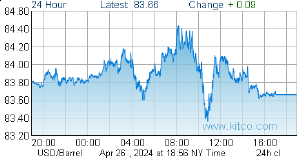The current weakness in Kent Exploration (KEX, TSX-V) is puzzling as it certainly does not jive with the company’s underlying fundamentals or excellent prospects. But that’s the market which for some reason has yet to fall in love with this stock. For those investors with just a little patience and a reasonable time horizon, we are certain that Kent will reward you handsomely in due course. We reap what we sow. There is incredible value here and now is the time to sow the money seeds with Kent to reap the rewards later on.
Kent closed today at just 16 cents (it dropped as low as 15.5 this morning) for a market cap of only $6 million. The weakness, we believe, is related to technical factors as well as some investors who have been selling stock to exercise warrants or selling their cheap stock once the warrants have been exercised.
Let’s quickly review Kent’s underlying strengths which clearly show why this stock offers such great value at current levels:
1. Gnaweeda Gold Project – Western Australia
Kent (the operator) continues to drill at Gnaweeda, a joint venture with Teck which covers a 28 kilometre strike length of highly prospective rocks in the Archean-age Gnaweeda Greenstone Belt. Turnberry is the most advanced property in this land package and 7 of 9 holes drilled by Teck in a limited program in 2007 intersected significant gold mineralization (including VG) at depths ranging from 17 to 280 metres. The possibility of Kent getting some favorable results at Turnberry are very real. The current Phase 1 program at Gnaweeda includes five holes at Turnberry and three at another prospect, Bunarra.
“Dr. Gerry Ray, who did our 43-101, is really excited about Gnaweeda,” Kent President/CEO Graeme O’Neill told us in a recent interview. “He looks at a lot of projects and he thinks this one is one of the cream of the crop…Kirkland Lake-style. He says you find one deposit, they’re like bells on a string. There’s always more. Typically you get two or three within a 10-15 kilometre strike.”
The style of both the mineralization and alteration at Gnaweeda suggests this project could host in-situ gold similar to the large Archean deposits mined in the neighboring Meekatharra-Wydgee Greenstone Belt. The current drill program may come up with some interesting results and will also give Kent and Teck a much better understanding of the geological and structural controls at Gnaweeda – valuable information for the planning of a second round of drilling.
2. Archean Star Spin-Off
Kent shareholders will soon receive a “dividend” in the form of shares in a new CDNX traded company to be called Archean Star Resources. Shareholder approval on the spin-off is expected at Kent’s AGM April 30 (a minimum $1 million financing is currently in the works with Archean Star at a proposed 25 cents) and we expect the company will begin trading on the Venture Exchange soon thereafter. For every four shares of Kent you own, you’ll receive one share of Archean Star. An investor with 20,000 shares of Kent (currently valued at $3,200 based on today’s closing price) will receive 5,000 shares of Archean Star. Even with Archean Star at just 20 cents (there will be approximately 13 million shares outstanding assuming a $1 million financing at 25 cents), that’s a nice $1,000 “dividend”.
The Archean Star spin-off, in our view, will unlock the value of Gnaweeda for Kent shareholders and could also become a vehicle for additional projects. Kent will still be left with two flagship properties including one that will deliver cash flow:
3. Alexander River Project
Drilling should commence in the near future at Kent’s Alexander River Project in New Zealand.
The market has yet to fully appreciate the significance of this particular property which quite possibly could eventually rival OceanaGold’s (OGC, TSX) very successful Globe Progress Mine located just 20 kilometres to the north. Ironically, Oceana gave up Alexander as a result of the 2008 market meltdown when it had to cut costs and go into survival mode.
The Alexander Prospect, which includes the old Alexander Mine that produced about 40,000 ounces of gold prior to closing in 1943, was estimated by Macraes Mining (the precursor to OceanaGold) to contain an inferred (non-compliant) resource of 643,000 ounces of gold. Macraes reported that an auriferous halo of sulphide hosted mineralization exists around the early mined reefs (similar, by the way, to Globe Progress) and that there is an inferred resource of approximately four million tons grading more than five grams per ton.
A significant portion of the Alexander Prospect has yet to be systematically explored, however, and that has O’Neill thinking this property may have one million-plus ounce potential. “From what we’re seeing here, this could go on for 2.5 kilometres (double the Macraes’ figure),” O’Neill told us. “While we were reviewing some of the historic data, Nancy (Nancy Reardon, Kent geologist) noted that there was a pan concentrate taken about three quarters of a kilometer away that ran 30 grams. That’s a pretty significant pan concentrate, and it’s in another watershed…there appears to be least two parallel structures. The whole gold belt stretches something like 40 or 50 kilometres north to south and over 100 small mines have been in operation.”
“The New Zealand government is good to deal with, very professional people,” explained O’Neill. “After many years of unfriendly governments, they changed their whole mindset. They’ve made a big commitment. It’s a supportive environment, similar to Saskatchewan. What I like to do, I like to go into an area and have someone say, ‘How can I help you’, and that is what I got there. I was very impressed.”
Kent completed some trench sampling at Alexander River late last year and in January reported impressive results including 24.6 g/t Au over 3.2 metres, 6.4 metres grading 6.87 g/t Au, 8 metres of 10.56 g/t Au, and 12.8 metres grading 4.5 g/t Au. Significantly, these numbers confirmed historical numbers from Alexander River – even better in some cases.
4. Flagstaff Barite Property
As far as we know, Kent is the only publicly traded company with a production-ready high-grade barite deposit (CE Minerals defined an historic deposit at Flagstaff in the early 1980’s which they estimated at 1.3 million tons of 4.2 specific gravity barite). Mine permits and a barite sales agreement are in place, though Kent still has to post a $140,000 reclamation bond. Infrastructure is excellent at Flagstaff, located in northeastern Washington State, and the actual mining operation would be fairly simple (blasting, excavating, upgrading) and low-cost.
Kent recently completed a long-term sales agreement with Matovitch Mining Industries for 20,000 tons of barite annually at $40 per ton, but what we found interesting in our conversation with O’Neill was that he stated, “Matovitch has indicated if we can produce 40 or 50 thousand tons a year, they would take it all.”
Annual production of 50,000 tons of high-grade barite would generate approximately $2,000,000 in cash flow for Kent. “Including a fairly substantial fudge factor we’re looking at costs of about $20 a ton,” stated O’Neill.
Kent will be able to get back on the ground at Flagstaff in a couple of months.
5. Management
Our final but most important point regarding Kent concerns its management and the quality team that O’Neill has assembled, from geologists through to investor relations. A company is only as good as its people, and Kent’s people are GOOD. O’Neill is a sharp businessman with strong ethics and a determination to succeed. He has recruited an extremely capable team, obviously something that Teck also noticed when it agreed to do a joint venture with Kent. Teck is very selective and doesn’t just jump into bed with any junior that knocks on its door. They saw credibility, talent, and a capable partner that could move a large project like Gnaweeda forward.
O’Neill has done an excellent job of keeping share dilution to a minimum with Kent. The company currently has 37 million shares outstanding (45 million fully diluted). They’re fairly low on cash (we estimate they have about $200,000 in working capital at the moment with more money coming in from the exercise of warrants) but they manage their cash well and will not dilute the stock with a large financing at current prices.
Building a company is never easy and sometimes the rewards don’t come as quickly as you would like. Kent’s stock price is exactly where it was about six months ago when we first uncovered this little gem. Our faith in Kent has not been shaken; to the contrary, it has only been reinforced by O’Neill’s low-key but strategic, deliberate and systematic approach. Over the past year-and-a-half in particular he has made bold moves and has steadily assembled the building blocks that will provide the foundation for not one but two outstanding junior resource companies. Now is very much the time to be a Kent shareholder. This is a company that BullMarketRun is convinced is destined to succeed in a huge way.
 BullMarketRun.com
BullMarketRun.com








